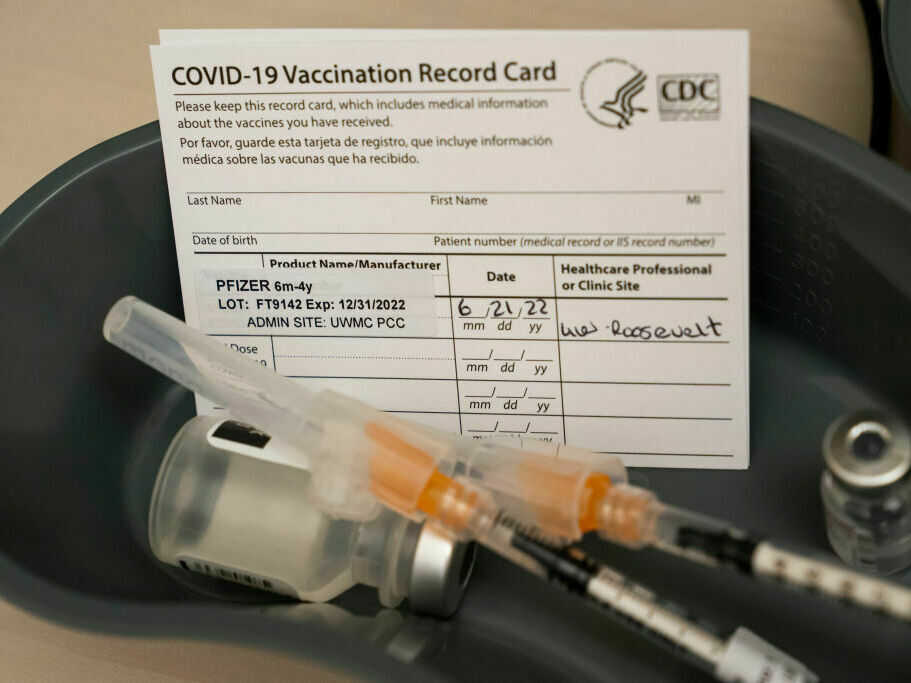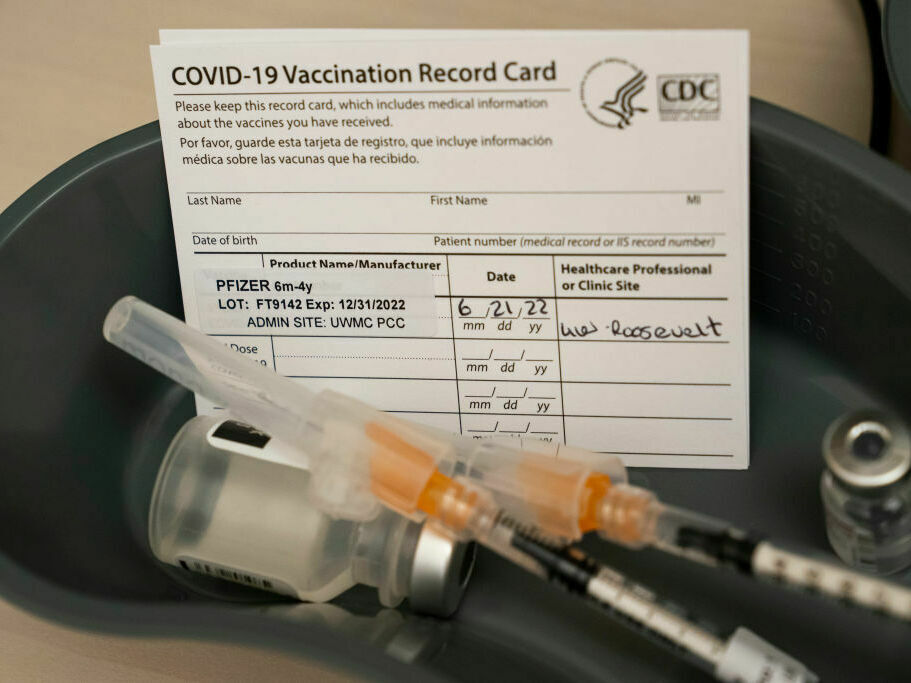Table of Contents

Immunity Us citizens obtained by vaccination or through prior an infection with the SARS-CoV-2 virus might account for the lighter than anticipated COVID surge in the U.S. this winter season, researchers say.
David Ryder/Getty Visuals
disguise caption
toggle caption
David Ryder/Getty Visuals

Immunity Us residents acquired by vaccination or via prior an infection with the SARS-CoV-2 virus could account for the lighter than envisioned COVID surge in the U.S. this winter, scientists say.
David Ryder/Getty Photographs
This winter’s COVID-19 surge in the U.S. appears to be fading with out hitting practically as hard as many had feared.
“I imagine the worst of the wintertime resurgence is about,” claims Dr. David Rubin, who’s been monitoring the pandemic at the PolicyLab at Children’s Medical center of Philadelphia.
No one expected this winter’s surge to be as terrible as the past two. But both equally the flu and RSV arrived roaring back definitely early this drop. At the similar time, the most contagious omicron subvariant yet took off just as the holidays arrived in late 2022. And most individuals were performing like the pandemic was around, which allowed all a few viruses to distribute immediately.
So there ended up major fears of hospitals having totally overcome yet again, with a lot of persons receiving seriously ill and dying.
But which is not what happened.

“This virus proceeds to toss 210-mile-for every-hour curve balls at us. And it seems to defy gravity or logic sometimes,” states Michael Osterholm, who heads the Heart for Infectious Ailment Research and Policy at the University of Minnesota.
“Persons all assumed we would see main transmission. Perfectly, just about every time we believe we have some reason to believe we know what it is likely to do, it won’t do that,” Osterholm says.
‘The worst’ of the surge of COVID, flu and RSV might be around
Infections, hospitalizations and fatalities did improve in the U.S. immediately after New Year’s. But the number of people catching the virus and obtaining hospitalized and dying from COVID soon commenced to fall all over again and have all been dropping now for weeks, according to the most up-to-date info from the Centers for Ailment Regulate and Avoidance.
The slide flu and RSV waves proceed to fade far too. And so the worst appears to be like like it’s likely over, lots of general public well being industry experts say.
“I am glad to say that we failed to have as much of a crush of bacterial infections as lots of imagined was doable, which is pretty welcome news,” says Jennifer Nuzzo, who heads the Pandemic Centre at Brown University.
The large query is: Why? Many aspects might have performed a position.
A person chance could be that persons prevented crowds, wore a mask and took other safeguards a lot more than community overall health specialists had predicted they would. But that isn’t going to truly appear to be the circumstance.
Could possibly ‘viral interference’ play a purpose?
Yet another probability is “viral interference,” which is a theory that in some cases when a man or woman will get infected with 1 virus, their immune response may protect them from having contaminated with yet another virus. So maybe RSV and flu crowded out COVID in the exact same way COVID crowded out those people other viral bacterial infections at several moments about the previous two yrs.
“At this place, I think which is more of a guess alternatively than really stable evidence,” Nuzzo states. “But if it really is correct, that may suggest we may be additional susceptible to observing a rise in infections when those people viruses are not all around.”
Nuzzo and other authorities suspect rather that the primary motive the COVID surge is ebbing is all the immunity we’ve all constructed up from prior bacterial infections, and/or the COVID vaccinations numerous of us have acquired.
“We have what I would contact now a superior immunity barrier,” suggests Dr. Carlos Del Rio, an infectious disorder expert at Emory University who heads the Infectious Disorder Modern society of The united states.
“In between vaccinations and prior an infection I think all of us are in a various put than we have been prior to,” he suggests. “All of us, if not fully shielded, we are fairly much better safeguarded. And that immunologic wall is actual.”
Why COVID-19 stays a sizeable danger
But none of this suggests the nation won’t have to worry about COVID any more. Far more than 400 men and women are continue to dying each day from COVID-19. Which is considerably less than the thousands who died for the duration of the darkest days of the very last two winter season surges. But it’s nonetheless a lot of extra people today than die from the flu every working day, for case in point.
“Make no blunder: COVID-19 stays a major general public overall health menace,” Nuzzo says. “That has not improved. And the fact that we are nevertheless dropping hundreds of individuals a day to this virus is deeply troubling. So we should not have to acknowledge that stage of ailment and dying that we are observing.”

William Hanage, an epidemiologist at the Harvard T.H. Chan College of General public Health and fitness, agrees.
“It’s over and above issue that culture has moved into a phase where the pandemic is for most of us if not over then undoubtedly peaceful. And that is a excellent detail. Prolonged may perhaps it keep on being so,” Hanage claims. “Is it the case that there is no preventable suffering? No. There is nevertheless preventable suffering and demise.”
Most of the persons dying are aged, quite a few of whom have not been given the hottest booster against COVID-19. So getting them boosted could support a large amount. And the immunity the relaxation of us have constructed up could preserve fading. That indicates numerous of the rest of us might at some issue have to have to get a different booster to assistance more minimize the menace from COVID.
One more wave of flu could nonetheless strike this year, community health and fitness gurus observe, and the chance proceeds that nonetheless an additional new, even much more risky variant of SARS-CoV-2 could arise.
“This virus is not done with us however,” Osterholm suggests.

